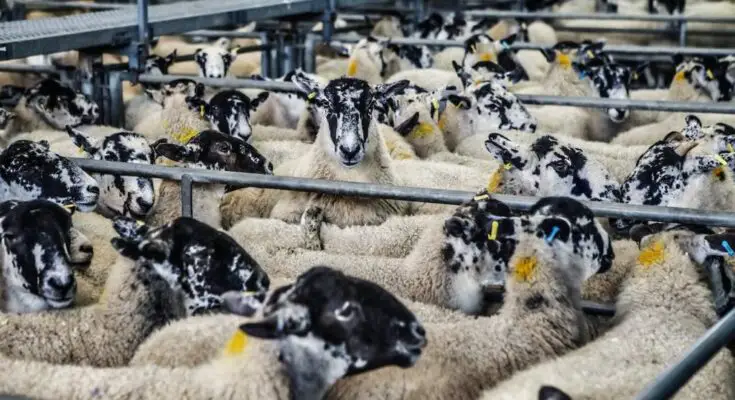Livestock management has evolved significantly over the years, with technological advancements and changing agricultural practices. As we step into 2024, livestock farmers need to stay abreast of the latest trends and implement effective strategies to ensure the health and productivity of their herds. In this article, we will explore six pro tips for livestock management in 2024.
Embrace Precision Livestock Farming
Precision Livestock Farming (PLF) has emerged as a game-changer in the agriculture industry. This technology integrates sensors, data analytics, and automation to monitor and manage livestock with precision. In 2024, farmers can leverage PLF to monitor the health, behavior, and performance of individual animals in real time. Implementing wearable devices, such as smart collars or ear tags equipped with sensors, allows farmers to track vital parameters like body temperature, heart rate, and feeding patterns. This data can be analyzed to identify early signs of illness, optimize feeding regimes, and enhance overall herd management. By adopting PLF, farmers can make data-driven decisions, ultimately improving the efficiency and well-being of their livestock.
Utilize Livestock Management Software for Efficiency
In optimizing livestock management for 2024, integrating technology is paramount. For instance, swine management software proves invaluable in enhancing efficiency. This sophisticated software facilitates seamless communication among management, field advisors, caregivers, and veterinarians promoting effective collaboration. Beyond facilitating communication, the software’s diverse features provide a convenient avenue for data analysis. It enables meticulous tracking of treatments, identifies areas for health improvement, and manages sales and movements effectively. The incorporation of such software exemplifies a modern, streamlined approach, ensuring that livestock operations stay informed, interconnected, and efficient in the ever-evolving landscape of agriculture.
Implement Sustainable Practices
Sustainability has become a focal point in modern agriculture, and livestock management is no exception. In 2024, farmers must prioritize sustainable practices to mitigate environmental impact and ensure the long-term viability of their operations. This includes adopting regenerative grazing techniques, optimizing feed formulations, and minimizing water usage. Rotational grazing, for example, allows livestock to graze on different sections of pasture, promoting soil health and preventing overgrazing. Moreover, farmers can explore alternative protein sources for livestock feed, reducing the environmental footprint associated with traditional feed production. Sustainable practices not only benefit the environment but also contribute to the overall resilience and profitability of livestock operations.
Embrace Blockchain for Traceability
Consumer demand for transparency in the food supply chain has led to the adoption of blockchain technology in agriculture. In 2024, livestock farmers can leverage blockchain for traceability, providing consumers with accurate information about the origin and journey of their food products. This transparency not only builds consumer trust but also helps farmers comply with regulatory requirements. By implementing blockchain, farmers can create an immutable and transparent record of each animal’s life cycle, from birth to processing. This ensures that consumers have access to information about the animal’s health, diet, and living conditions. Blockchain also enhances traceability in the event of disease outbreaks, allowing farmers to quickly identify and isolate affected animals, thereby minimizing the impact on the entire herd.
Prioritize Animal Welfare and Well-being
In 2024, there is an increasing emphasis on animal welfare, and consumers are more conscientious about the treatment of farm animals. Livestock farmers should prioritize the well-being of their animals, not only for ethical reasons but also to meet market demands for humanely raised products. Investing in comfortable housing, proper ventilation, and access to clean water and nutritious feed are essential components of ensuring good animal welfare. Regular health check-ups, vaccination programs, and prompt response to signs of distress contribute to the overall well-being of the herd. By prioritizing animal welfare, farmers not only meet consumer expectations but also enhance the productivity and longevity of their livestock.
Stay Informed and Educated
Livestock management is a dynamic field, with new technologies and best practices constantly emerging. In 2024, staying informed and educated is crucial for successful livestock farming. Farmers should actively engage in workshops, conferences, and online resources to keep up with the latest trends, research findings, and industry developments. Networking with other farmers, industry experts, and agricultural extension services can provide valuable insights and support. Continuous education allows farmers to adapt to changing conditions, implement innovative solutions, and ultimately improve the overall management of their livestock.
Conclusion
Livestock management in 2024 demands a proactive approach that incorporates technological advancements, sustainable practices, and a commitment to animal welfare. Precision Livestock Farming, Artificial Intelligence, sustainable practices, blockchain technology, prioritizing animal welfare, and staying informed are six pro tips that can guide farmers toward success in the ever-evolving landscape of livestock management. By embracing these strategies, farmers can not only enhance the efficiency of their operations but also contribute to a more sustainable and ethical agricultural future.



